Interim Data From National Efforts To Make Care Safer, 2010-2014
This document provides preliminary estimates for 2014 on hospital-acquired conditions (HACs), indicating a 17 percent decline, from 145 to 121 HACs per 1,000 discharges, from 2010 to 2014. A cumulative total of 2.1 million fewer HACs were experienced by hospital patients in 2011, 2012, 2013, and 2014 relative to the number of HACs that would have occurred if rates had remained steady at the 2010 level. Approximately 87,000 fewer patients died in the hospital as a result of the reduction in HACs, and approximately $19.8 billion in health care costs were saved from 2010 to 2014.
Contents
Summary
Results
Discussion
Appendix
Summary
Interim estimates for 2014 show a sustained 17 percent decline in hospital-acquired conditions (HACs) since 2010. A cumulative total of 2.1 million fewer HACs were experienced by hospital patients over the 4 years (2011, 2012, 2013, and 2014) relative to the number of HACs that would have occurred if rates had remained steady at the 2010 level. The measured interim rate for 2014 held steady from 2013 at 121 HACs per 1,000 discharges, down from 145 in 2010. We estimate that nearly 87,000 fewer patients died in the hospital as a result of the reduction in HACs and that approximately $19.8 billion in health care costs were saved from 2010 to 2014.
Although the precise causes of the decline in patient harm are not fully understood, the increase in safety has occurred during a period of concerted attention by hospitals throughout the country to reduce adverse events. This effort has been spurred in part by Medicare payment incentives and catalyzed by the U.S. Department of Health and Human Services (HHS) Partnership for Patients (PfP) initiative.
Results
The methods for this interim 2014 update on the rates and counts of HACs and associated costs and deaths averted are unchanged from those previously described for 2010 to 2013. The details of these methods and the resulting data for the prior periods are online.1
Interim estimates for 2014 show the national HAC rate as being steady from 2013 to 2014 and 17 percent lower than in 2010 (Exhibits 1 and 2). As a result of the reduction in the rate of HACs, we estimate that approximately 790,000 fewer incidents of harm occurred in 2014 than would have occurred if the rate of HACs had remained steady at the 2010 level (Exhibit 3).
Cumulatively, approximately 2.1 million fewer incidents of harm occurred in 2011, 2012, 2013, and 2014 (compared with 2010). About 40 percent of this reduction is from adverse drug events, about 28 percent from pressure ulcers, and about 16 percent from catheter-associated urinary tract infections (CAUTIs) (Exhibit 4). These HACs constituted about 34 percent, 27 percent, and 8 percent, respectively, of the HACs measured in the 2010 baseline rate (Exhibits A1 and A2).
Exhibit 1. HAC Rates, 2010 to Interim 2014
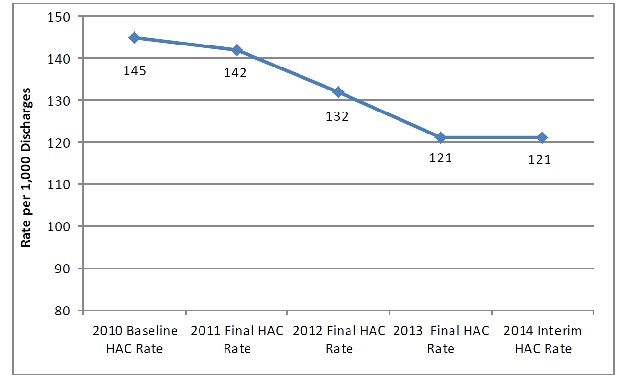
Exhibit 2. Annual and Cumulative Changes in HACs, 2010 to 2014
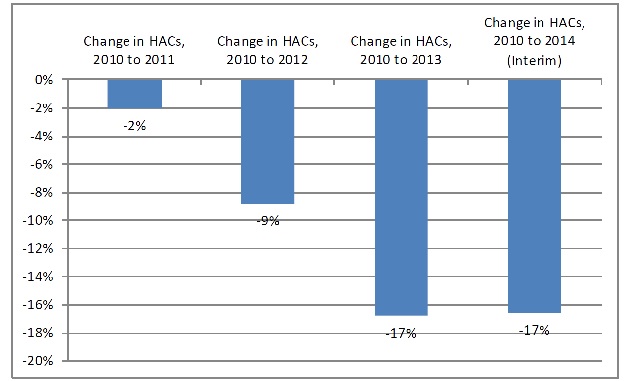
Source: AHRQ National Scorecard Estimates from Medicare Patient Safety Monitoring System, National Healthcare Safety Network, and Healthcare Cost and Utilization Project.
Note: Percentages are rounded.
Exhibit 3. Total Annual and Cumulative HAC Reductions (Compared With 2010 Baseline)
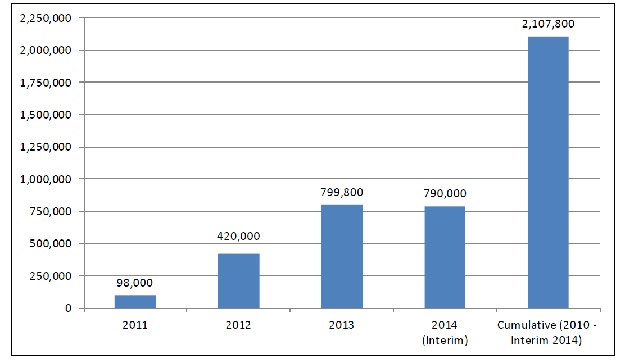
Source: AHRQ National Scorecard Estimates from Medicare Patient Safety Monitoring System, National Healthcare Safety Network, and Healthcare Cost and Utilization Project.
Exhibit 4. Change in HACs, 2011-2014 (Total = 2,107,800)
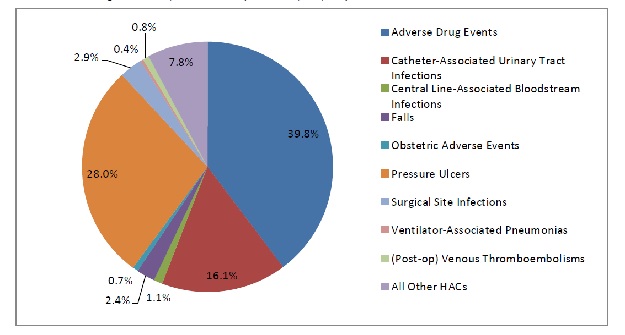
Interim 2014 estimates indicate that more than 36,000 fewer patients died in hospitals in 2014 as a result of the decline in HACs compared with the number of deaths that would have occurred if the rate of HACs had remained steady at the 2010 level (Exhibit 5). Most of the deaths averted occurred as a result of reductions in the rates of pressure ulcers and adverse drug events (ADEs), although declines in other HACs also contributed significantly to deaths averted (Exhibit 6).
Cumulative deaths averted from 2010 through 2014 (interim data) are estimated at nearly 87,000. As shown in Exhibit A3, there is variation across types of HACs in the cost savings per HAC averted and in the level of increased mortality associated with the HAC. As a result of this variation, costs associated and deaths averted by HAC type, as shown in Exhibits 7 and 8, are not directly proportional to the HAC reductions shown in Exhibit 4.
Exhibit 5. Total Annual and Cumulative Deaths Averted (Compared With 2010 Baseline)
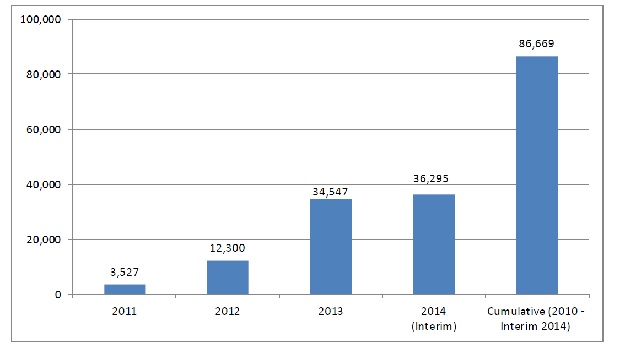
Exhibit 6. Estimated Deaths Averted by Hospital Acquired Condition (HAC), 2011 - Interim 2014
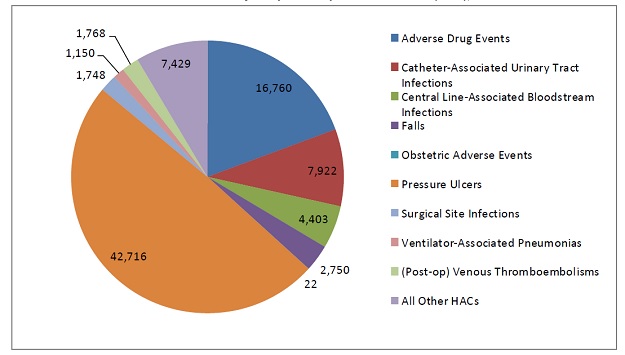
Exhibit 7. Estimated Cost Savings, by Hospital-Acquired Condition (HAC), 2011 - Interim 2014
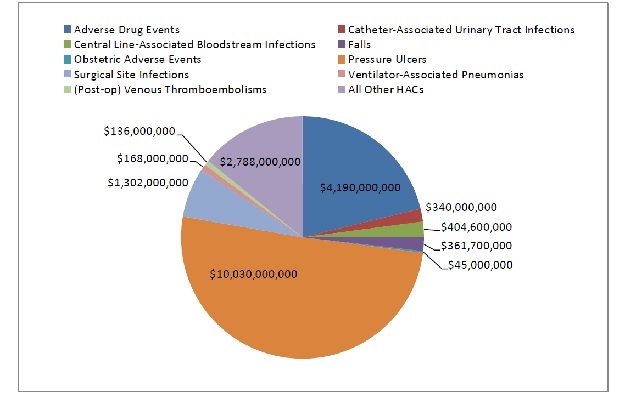
Interim 2014 estimates show that the decline in HACs resulted in estimated cost savings of approximately $7.8 billion in 2014, about the same as in 2013. Estimated cumulative savings for 2011, 2012, 2013, and 2014 are approximately $19.8 billion (Exhibit 8).
Exhibit 8. Total Annual and Cumulative Cost Savings (Compared to 2010 Baseline), in Billions
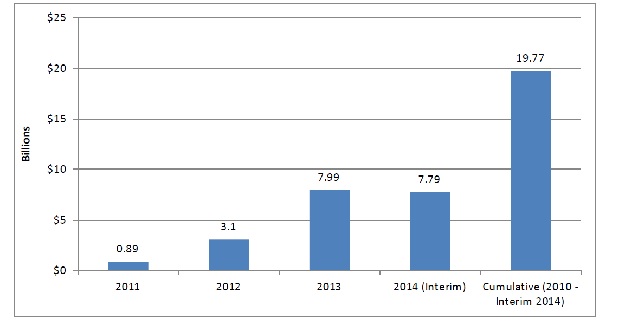
Discussion
The estimated 17 percent reduction in HACs from 2010 to 2014 indicates that hospitals have made substantial progress in improving safety. An estimated 2.1 million fewer harms were experienced by patients from 2010 to 2014 than would have occurred if the rate of harm had remained at the 2010 level. The reasons for this progress are not fully understood. Likely contributing causes are financial incentives created by CMS and other payers' payment policies, public reporting of hospital-level results, technical assistance offered by the QIO program to hospitals, and technical assistance and catalytic efforts of the HHS PfP initiative led by CMS. Numerous other public and private initiatives to improve healthcare quality and patient safety were implemented during these years; for example, the widespread implementation and improved use of Electronic Health Records at hospitals.2 And crucially, the progress was made possible by the results of investments made by the Agency for Healthcare Research and Quality in producing evidence about how to make care safer, investing in tools and training to catalyze improvement, and investments in data and measures to be able to track change. There is still much more work to be done, even with the 17 percent decline in the HACs we have measured for the PfP since 2010. The Interim 2014 HAC rate of 121 HACs per 1,000 discharges is the same as was seen in 2013, and it means that in 2013 and 2014 almost 10 percent3 of hospitalized patients experienced one or more of the HACs we measured. That rate is still too high.
Prevention of approximately 87,000 deaths in the 2011 to 2014 period as a result of the decline in HACs, with approximately 70,000 of these deaths averted in 2013 and 2014 alone, is encouraging. As indicated in the results section in the Final 2013 report,4 the estimate of deaths averted is less precise than the estimated reduction in HAC rates. We directly estimate the size of the reduction in HAC rates but rely on analysis from other researchers of the complex relationship between HACs and mortality to extrapolate the impact of the reduction in HACs on deaths averted. These estimates used in our analysis originate from a variety of sources and methodologies. Similarly, we estimate an associated reduction of $19.8 billion in health care costs from 2011 to 2014 as a result of the reduction in HACs, with nearly $16 billion of those cost savings occurring in 2013 and 2014. As is the case for the estimate of deaths averted, there is less precision regarding the cost savings estimates than there is about the estimates of the magnitude of reduction in HACs. Even with less precision, the estimates of deaths averted and costs savings are compelling.
Despite the progress to date in reducing HACs, much work remains to be done to ensure that the U.S. health care system is as safe as it can possibly be. The interim for 2014 is 17 percent less than 2010, but it is also unchanged from 2013. HHS and other public and private partners are continuing to work to improve patient safety. These data from 2013 and 2014 indicate that it is possible to make substantial progress in reducing virtually all types of HACs simultaneously. CMS and HHS leaders have termed this objective as achieving "Safety Across the Board" and believe it should be a national goal. In September 2015, a new group of Hospital Engagement Networks were selected for funding by CMS and their work following up on the Partnership for Patients has begun.5 CMS has funded a new initiative focusing on improving the quality of outpatient health care, which is named the Transforming Clinical Practices Initiative,6 and its work promises to make improvements in this area.
AHRQ's patient safety programs continue to enable and guide improvements in health care delivery. In addition to sustaining further improvements in the safety of hospital care, the Agency has substantially expanded its efforts in order to extend the success that hospitals have achieved to all health care settings. As part of this initiative, AHRQ is actively targeting current challenges such as diagnostic error and antibiotic resistance, and creating knowledge that will sustain national progress in making health care safer.
1. AHRQ Partnership for Patients Web page for methods and data: http://www.ahrq.gov/professionals/quality-patient-safety/pfp/index.html.
2. A paper by Furukawa, et al. (Journal of Patient Safety, in press) indicated that in 2012 and 2013, adverse events were less frequent at hospitals that have implemented a full EHR. Although the paper did not study trends in EHR adoption or trends in adverse event rates, one may hypothesize that part of the HAC reduction seen from 2010 to 2013 and 2014 could have been partially due to increased EHR adoption and increases and improvements in EHR use.
3. The rate of 121 HACs per 1,000 discharges does not equate to 12.1% of patients experiencing HACs because some patients experience more than one HAC during an inpatient hospital stay. Based on prior experience reviewing HAC data, the 121 HACs per 1,000 discharges are probably experienced by fewer than 100 patients among 1,000 discharges (10 percent of inpatients).
4. Online at: http://www.ahrq.gov/professionals/quality-patient-safety/pfp/hacrate2013.html.
5. PfP HEN 2.0 Press Release: https://www.cms.gov/Newsroom/MediaReleaseDatabase/Fact-sheets/2015-Fact-sheets-items/2015-09-25.html.
6. CMS TCPI Web page: https://innovation.cms.gov/initiatives/Transforming-Clinical-Practices/.



